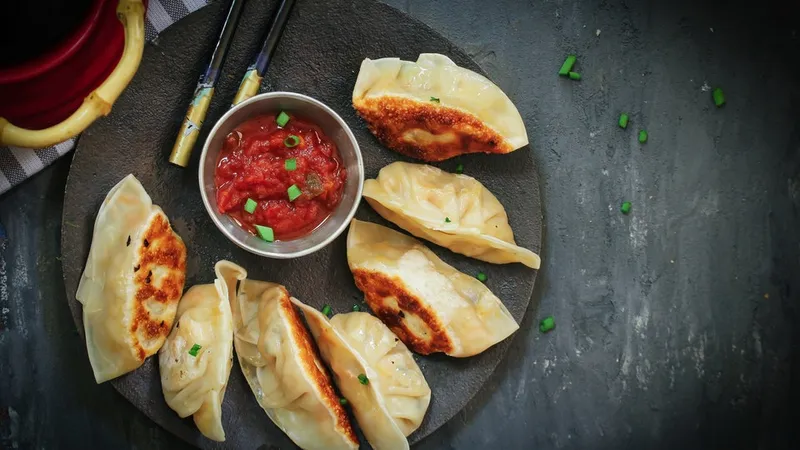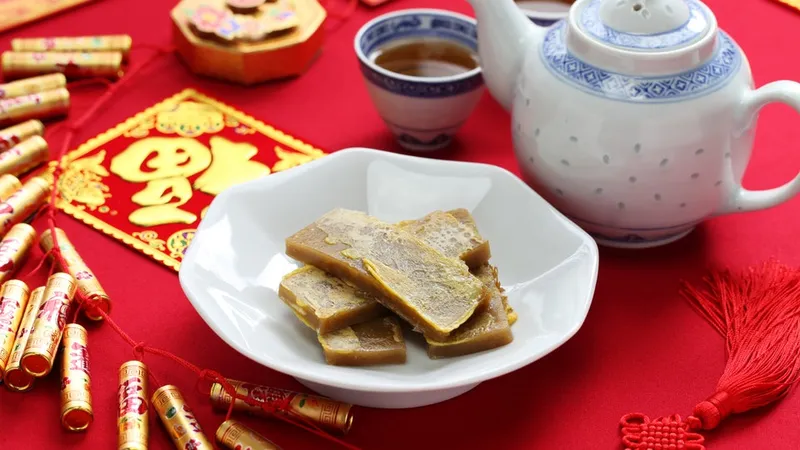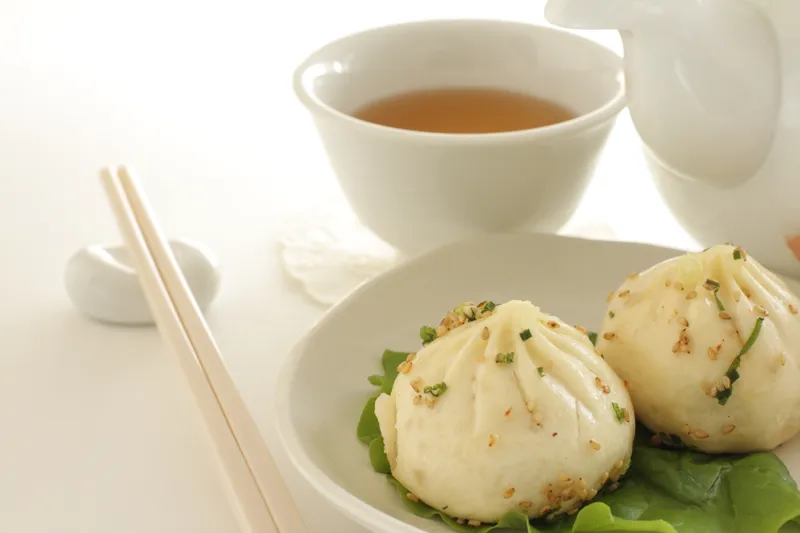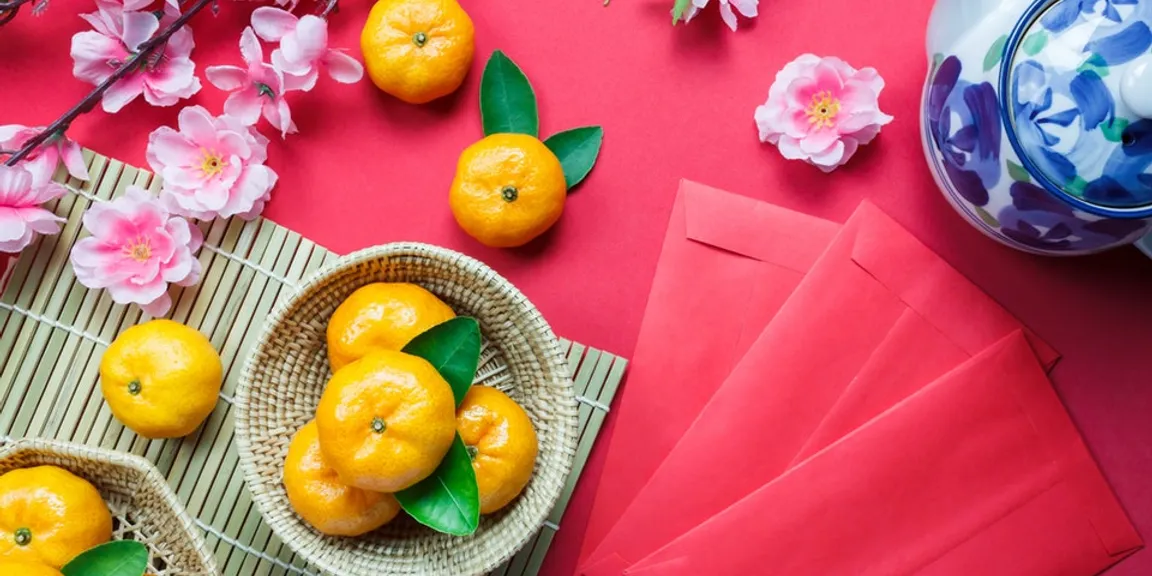Gong Xi Fa Cai: Happy Chinese New Year!
What are some of the special dishes of Chinese New Year? Our columnist gives us the lowdown on all the traditional favourites and some new dishes too…
Chinese New Year, commonly known as Lunar New Year, is a Chinese festival that celebrates the beginning of a new year on the traditional Chinese calendar. The festival, that falls on February 5 this year, is usually referred to as the Spring Festival in modern China, and is one of several Lunar New Years in Asia.
Some years ago, I ventured behind the Bamboo Curtain accompanied by my significant other and an elderly aunt. For some obscure reason we took a ferry to Macao and then played Marco Polo by crossing the border on foot before taking a taxi to Guangzhou, our first port of call. Legend has it that Signor Polo horrified the imperial court of Kubhlai Khan when he downed the contents of the finger bowl that was brought to him… but in all fairness, it’s quite a distance from Rome and the poor man must have been thirsty. The balance was restored when he unpacked his suitcase and cooked spaghetti for the Emperor: Chinese food has never been the same since then, long live noodles.
Memories of China

Dimsums are a favourite across the world
Over a period of three weeks, we journeyed from Guangzhou to Beijing via Guilin, Xian, Hangzhou and Shanghai and although the passage of time has dimmed my recollection, let the record reflect that in terms of culinary advancement, the Chinese reign supreme.
Seriously, I’d much rather eat dim sum from a pushcart in Hainan than visit Macdonald’s with a burger-munching barbarian from Florida; the only time I have entered those golden arches is when I’ve needed to use the loo. In terms of sheer technique, ingredients and diversity, China rules the world. BTW, despite several attempts, I was unable to find either chicken or Gobi Manchurian on the menu and our guide was seriously pissed off when Aunty insisted it was as much a part of China as the Great Wall.
A skewer of beef and some Peking duck

Peking Duck is a much-loved dish during a festival
In Xian, I tasted the most incredible skewers of beef, barbecued to perfection and served in a crusty naan: sensational taste and flavor. I was astonished until I realised Xian has a large Uighur Muslim population: this is Kebab Central, down to the raw onions!
In Beijing, we sampled the legendary Peking duck, carefully prepared with air being pumped under the skin to separate the fat, before being marinated in maltose syrup and then roasted to golden-brown perfection in a closed oven.
The first course is the crispy duck skin served with a magical hoisin sauce made with dried yellow soyabean paste, followed by duck served in delicate pancakes with slivers of cucumber and spring onion. The next course is a light soup made with duck bones, while dedicated gourmands relish the remaining meat, stir-fried with salt and Szechuan pepper and served with noodles.
Culinary traditions

Rice cakes are perfect for tea
February 5th of this year marks the start of the lunar calendar or Chinese New Year when special dishes are prepared to ensure good fortune in the year ahead. Menu selection is as important as the preparation, serving and the consumption and the traditional feast includes dumplings, steamed fish, spring rolls, rice cakes or nian gao and fruit.
Dude, if you thought Pongal was complicated, wait until you get to Beijing: a Chinese grandma will run rings around a TamBrahm maami when it comes to culinary rules. Diners can enjoy the fish only after the one who faces the fish head eats first and the fish cannot be moved, no way, I cut your head off. The happy couple who face the head and tail of fish must drink together, as this is considered auspicious.
After the steamed fish is served, the next course is what is universally known as dim sum with one critical difference: these are made in the shape of ingots, not bars, but delicate, oval boat-shaped morsels, elegantly folded at both corners.
Legend has it that the more dumplings you eat during the feast, the more money you will make in the New Year. Popular fillings are minced pork, diced shrimp, fish, ground chicken, beef, and vegetables steamed in a translucent skin of dough.
Tucking into favourites

Soup dumplings are known for their delicate flavour
My personal favourite is the steamed soup dumplings (xiao long bao) originally a northern Chinese creation, but now internationally renowned thanks to the Din Tai Fong chain in Singapore. The main feature is the wrapper, which is shaped like a volcano to release a mouthful of hot soup when you bite off the top. The traditional filling is pork and lightly frozen stock, though popular variations include pork with minced crab meat and roe.
Besides the savoury dumplings, there are sweet rice cakes called nian gao, which were traditionally offerings to the gods and ancestors. Apparently, gāo also means tall, symbolizing the yearning to be successful and “higher” each year, no pun intended. Chinese parents who think they are stand-ups like to tell their children that eating nian gao will help them grow taller; instead of meekly nodding like Charlie Chan, moody Chinese teenagers mutter, “Stop it dude, that’s so lame.”
For those looking for an alternative to Ven Pongal, the main ingredients of niangao are sticky rice, sugar, chestnuts, Chinese dates and lotus leaves. Then we have Longevity Noodles which, go to the top of the class if you guessed, symbolize a wish for longevity. Their unusual length and the expertise involved to ensure that the noodles stay whole during the cooking process are symbolic of the eater's life. They are either fried and served on a plate, or boiled and served in a bowl with a tasty broth.
Fruitful blessings
Finally, we come to the fruit: tangerines, oranges and peaches are traditionally served at Chinese New Year not only because they are round and golden in colour, symbolising fullness and wealth, but also because they are considered lucky.
If you are lucky enough to be invited to a Chinese home for New Year, carry a basket of oranges, pomelos and pomegranates and say, “Gong xi fa cai,” pronounced ‘Gong she fah say’ which means “Wishing you great happiness and prosperity.
Here’s one of my favourite recipes…
Stir Fried Chinese Greens

Chinese greens
A wise man once said, “The Chinese don’t cook vegetables, they merely threaten them…”
Ingredients
Bok choy 1 bunch sliced
Spring Onions sliced diagonally sliced
Ginger 2 cm piece, finely minced
Garlic 3 cloves, finely minced
Dash of oyster sauce (optional) rice wine, a splash
Vegetable stock ¾ cup
Cornflour 1 tsp mixed in a little cold water
1 tbsp oil
Salt and pepper to taste
Method
Heat oil in wok, add ginger and garlic, cook for one minute, add greens and toss for another minute, splash in oyster sauce and rice wine if using, add hot vegetable stock and turn off flame. Check the seasoning and add salt, pepper if necessary. Add the cornflour and stir. Serve immediately with steamed rice.






